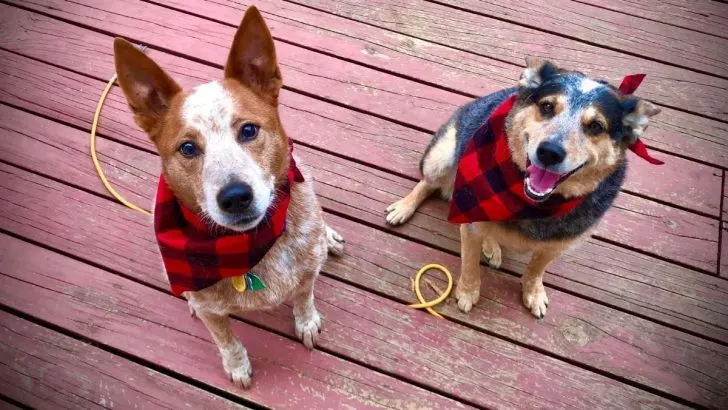Regarding all things canine, few breeds have more charisma and personality than Australian Cattle Dogs, known as Red Heelers and Blue Heelers.
Picture this: a dog park showdown between these two titans of tail-wagging, each strutting their stuff, hoping to outdo the other in a working dog version of “America’s Next Top Model.”
You have the Red Heeler in one corner, with its fiery coat and spirited personality leading the way. In the other is the Blue Heeler, calm and composed with fur that would make denim envious.
But beyond the fur-tastic fashion show, what sets these individual dogs apart? Prospective owners, prepare for an exciting journey through temperaments, genetics, health, training, and looks.
Whether you are an aspiring pet parent choosing between a lively Red or chill Blue or just a curious dog lover, this read will tickle your fancy.
Just sit! Stay right there! And let’s take this wagging tail ride together!
Red Heeler Vs Blue Heeler Genetics
Knowing the genetics behind Red Heelers and Blue Heelers provides interesting insights into why these two types of Australian Cattle Dogs differ.
Though differentiated by color patterns, these dogs share common origins and genetic properties that influence their looks, behavior, and overall fitness status.
Common Ancestry
The Australian Cattle Dog is the origin breed of both Red Heelers and Blue Heelers. Australian settlers developed this breed in the 19th century, and they needed a resilient, hardworking dog to herd cattle in harsh conditions.
They achieved this by crossbreeding domestic herding dogs with wild Dingoes, contributing to the breed’s toughness and endurance.
Genetic Variations In Coat Color
What primarily differentiates the red from the Blue Heeler is just its coat color, which is determined by specific genes that affect pigmentation.
Blue Heeler
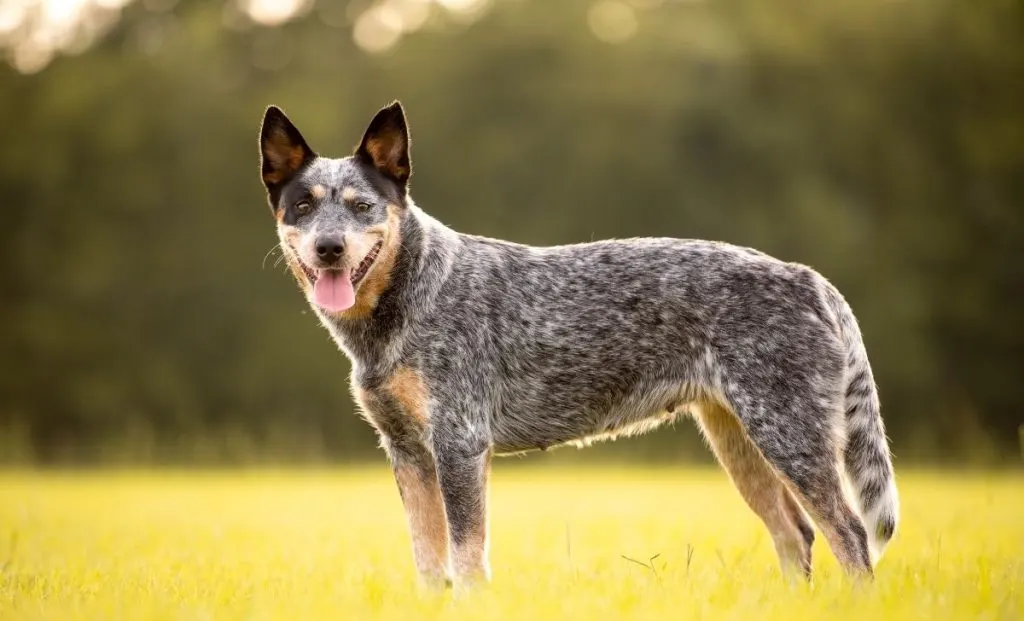
Blue color is caused by a mixture of black and white hair, giving it the appearance of blue or gray.
The dominant merle gene and the interspersed white hairs effect result in the blue coat color. This combination of genes gives rise to blue or steel grey coats, as seen in such dogs.
Additional genes that determine where colors are distributed influence such dogs having black or tan markings mostly around their face, ears, and legs.
Red Heeler
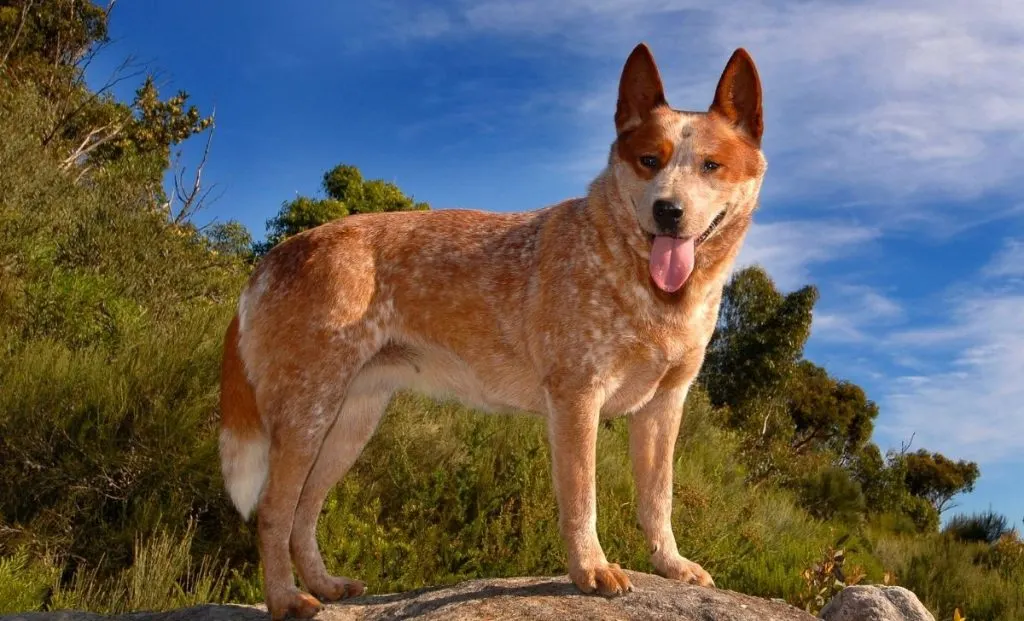
The red coat is composed of mixed red and white hair, which gives it a reddish-speckled appearance.
The presence of two alleles for recessive red pigmentation determines whether a Heeler will be red. For a dog to be red, it must inherit this gene from both parents.
Certain genes control how much more solidly colored red patches appear, particularly around the head and ears, among other areas, on some Red Heelers compared to others.
Inheritance Patterns
The inheritance patterns of the main color of the coat in heelers follow Mendelian genetics, where specific alleles (gene variants) from each parent dictate an offspring’s physical characteristics.
Dominant Versus Recessive Genes
Usually, one has observed that blue seems more common than red.
This means that if there is at least one blue allele in addition to one red allele, there will always be an occurrence of blue color.
In cases where two alleles are required for a heeler to appear as being red, then both parents should have passed down these alleles as we mentioned.
Breeding And Genetic Testing
Australian Cattle Dogs have benefited from selective breeding as it helps to maintain certain qualities and conditions of dogs.
Thus, responsible breeders follow ethical standards and examine coat color, overall health, temperament, and working ability.
A standard rule of responsible ownership is triple-checking the breeder’s reputation before getting one of these cheeky dogs.
Breeders can use modern genetic testing to screen for potential inherited diseases such as hip dysplasia, PRA, and deafness, thereby ensuring healthier puppies.
By studying pedigrees, breeders will choose dogs to mate based on the information about their relatives to maintain genetic variability while reducing the risk of genetic disorders.
Red Heeler Vs Blue Heeler Physical Attributes
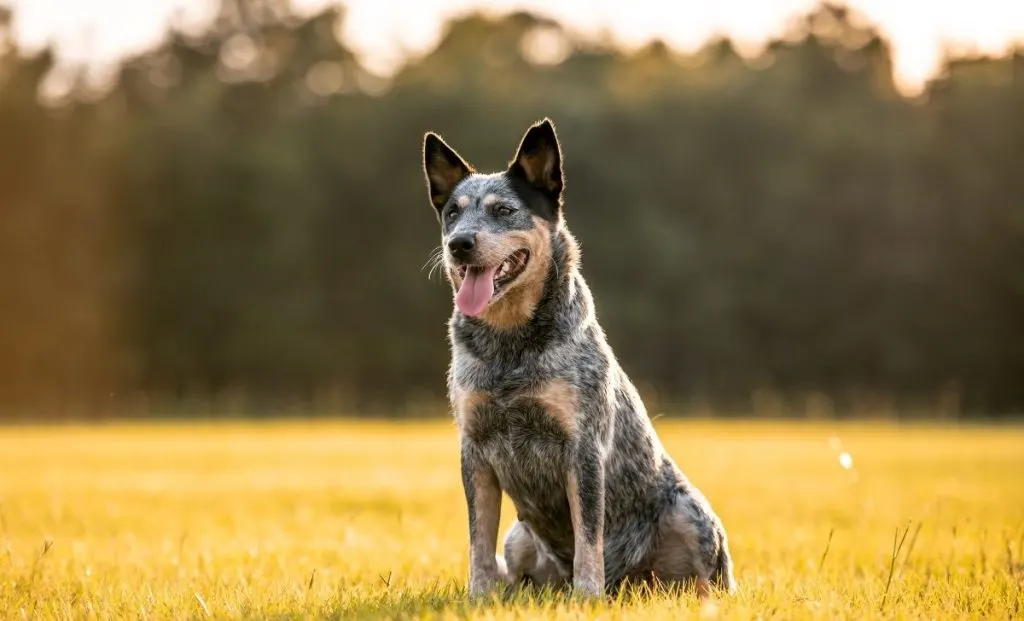
However similar they might be, the difference in their coat color gives each of them a different look that may influence your choice.
Let us now examine the aesthetic qualities of these two delightful animals in closer detail.
Red Heeler
Known for their warm, reddish coats, Red Heelers have an intense, fiery appearance. The coat has red speckles or a motley appearance made up of a red and white hair mixture.
At times, there are solid patches of red on them, especially on the face, making each of them unique.
Red Heeler Physical Attributes Overview
Coat Color: It is a mix of red and white hairs producing a speckled or mottled look most often associated with them.
Visible Markings: Frequently found on the face and ears, usually consisting of solid red areas; sometimes, they have white markings as well.
Eyes: Their eyes are usually dark brown, contrasting sharply with their light coat color, giving them a very sharp look overall.
Overall Look: These dogs emanate energy and vitality with their rugged looks that simultaneously seem wild yet appealingly graceful.
Blue Heeler
They have a cool blue-grey coloration, which explains why they are called Blue Heelers. This happens when black hairs and white hair mixtures give bluishness to it, with some spots appearing jet black or tan.
They stand out due to this coloration, making viewers feel intrigued about their status quo and mystified because it adds sophistication.
Blue Heeler Physical Attributes Overview
Coat Color: Shades between black & white hairs causing an almost steel-gray tint.
Visible Markings: On the face, ears, and sometimes legs, they may have solid ones like black or tan markings.
Eyes: Typically dark brown, which gives them added depth, making the breed’s appearance even more striking.
Overall Look: They are slim, sleek, and elegant animals that look fit for a marathon run or formal dance.
Common Features
Red Heelers and Blue Heelers have several things in common despite their color differences because they come from the same ancestral lineage.
Build: Both have compact bodies with muscles capable of doing lots of work simultaneously. They are light on their feet and can keep their balance running through rough terrains.
Size: Generally, these dogs stand 17-20 inches tall at the shoulder and weigh between 35-50 pounds.
Ears: The two types of heelers have medium-sized erect ears that always make them appear smart and watchful.
Tail: Their tails are moderately long and set low, usually carried down with a slight curve.
Blue Heeler vs Red Heeler Temperament
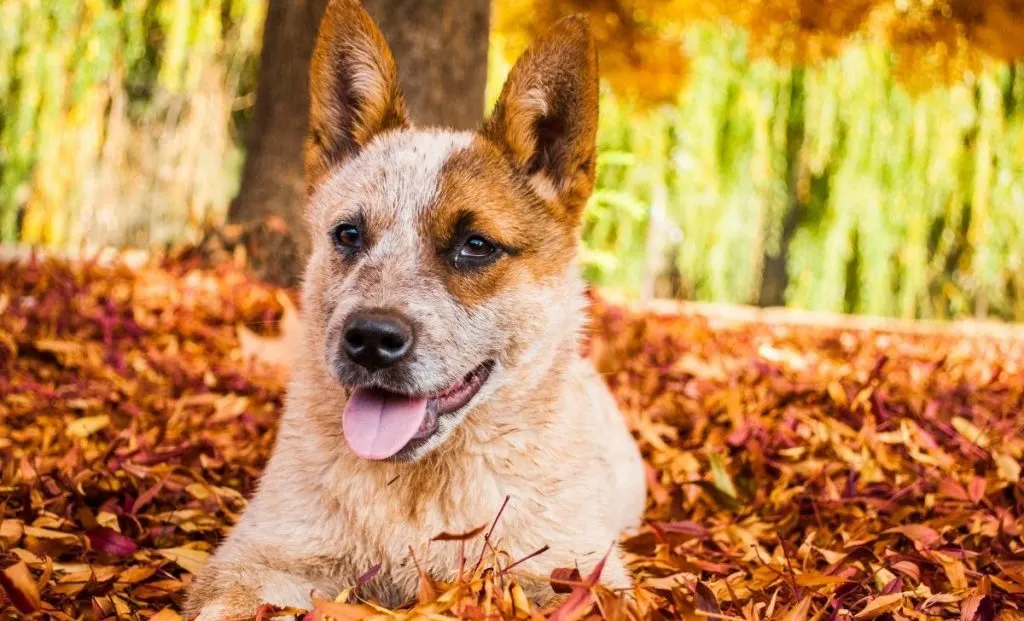
Regarding temperament, both Red Heelers and Blue Heelers share quite a bit in common because they come from one breed lineage. Though there may be slight differences, so let’s explore them in detail
The Red Heeler Or The Wild Beast
Red Heeler dogs are sometimes thought to be more fiery and independent. These animals are energetic and enthusiastic, always willing to do something new.
If they were humans, they would be the people who would always suggest an abrupt road trip or a skydiving spree out of the blue.
They love physical activity and mental challenges so that makes them perfect for an active individual or family.
Red Heeler Temperament Overview
Energy Level – High. They must also have plenty of exercise and mental games.
Independence – Strong. This category is sometimes somewhat inflexible within the breed as it is a temperamental trait.
Social Nature – Moderate. They are faithful to their families but might be aloof toward strangers.
Work Ethic – Exceptional. These dogs have a very strong work ethic. They are driven by herding instincts, which makes them great task dogs, obedience, and agility dogs.
The Blue Heeler Or The Calm One
On the other hand, Blue Heelers are usually seen as slightly more mellow versions of their wild red cousins.
Despite having high energy levels typical for Australian cattle dogs, they tend to be more laid-back and adaptable.
If they were people, they would remain calm in any situation, smoothly coping with major troubles without losing calmness.
Blue Heeler Temperament Overview
Energy Level – High. They also need a good amount of exercise but can be more adaptable to different activity levels.
Independence – Strong. This category is sometimes somewhat inflexible within the breed as it is a temperamental trait.
Social Nature – Outgoing. More so than Red Heelers, they tend to be outgoing and like strangers more.
Work Ethic – Exceptional. Like Reds, their desire for obedience and agility training is strong but not aggressive.
Red Heeler Vs Blue Heeler Trainability

Training a Red Heeler or Blue Heeler can be a very rewarding experience because of their intelligence, agility, and willingness to work.
However, subtle differences in their temperaments affect training requirements and approaches.
Red Heeler
The Red Heeler’s fiery independence makes it one of the most challenging but exciting dogs during training.
Because they are very energetic and strong, you should use a firm yet fair approach in dealing with them.
Begin socializing your Red Heeler early by exposing them to different people, places, and situations so that they grow into stable and good dogs.
A confident and consistent leader is what Red Heelers prefer as a master. You must show your dog where it belongs by setting rules and limits; thus, you will have become its pack leader.
Offer reward-based incentives like food treats, positive affirmations, or games whenever they behave nicely. Avoid harsh corrections as these may backfire due to their self-reliance.
In addition, incorporate puzzle toys, interactive games, and advanced training exercises, which keep their minds sharp and engaged as boredom results in destructive behaviors.
To manage the boundless energies inside this type of dog, give them enough physical exercise like long walks, running, or agility training sessions.
Blue Heeler
Blue Heelers are more adaptable than red ones, making training strategies easier when dealing with them.
They are quick learners because they are highly intelligent and hardworking but need structure and stimulation.
Like Red Heelers, early socialization is crucial. Let them grow up with people and other dogs in various surroundings so you will have a well-adjusted adult dog.
It is important to be consistent and clear in your commands. Blue Heelers love routine and knowing what is expected of them.
Positive reinforcement should be used to encourage them to repeat these actions for good behavior again and again.
Depending on what you have available, obedience work, agility courses, and even herding are among top activities that these dogs perform.
Likewise, they need lots of physical activity because this breed has high energy levels.
Regular walks, playtime, or anything else challenging them will help keep them happy and healthy.
Red Heeler vs Blue Heeler Health Management
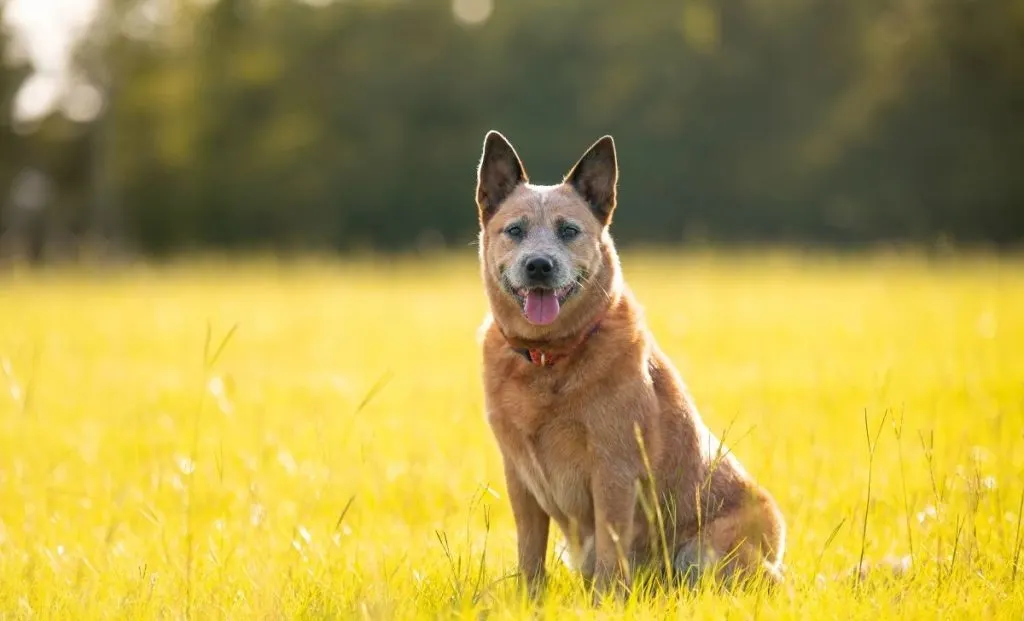
Considering their genetic background, Red Heelers and Blue share similar health profiles.
Nevertheless, understanding these dogs’ specific health concerns and needs is crucial to ensuring your furry friend’s long, happy, and healthy life.
Let’s delve into the health aspects of these energetic and resilient breeds.
Potential Health Concerns
All breeds, including Red and Blue Heelers, normally suffer from common genetic or hereditary problems. Being aware of such typical conditions can help you in early diagnosis and proper care, leading to continued good health for your dog.
- Hip Dysplasia: A genetic condition where the hip joint doesn’t fit properly into the hip socket, leading to pain and arthritis over time. Management is possible with regular exercise, maintaining a healthy weight, and, in severe cases, surgical intervention.
- Progressive Retinal Atrophy (PRA): An inherited disease that causes progressive vision loss, eventually leading to blindness. Management is possible with regular eye checkups and genetic testing can help in early detection. There is no cure, but conditions can be managed by creating a safe environment for the dog.
- Deafness: Congenital (present at birth) and age-related deafness can affect Heelers. Regular hearing tests and adapting training methods to include visual cues can be helpful.
- Elbow Dysplasia: Similar to hip dysplasia, it affects the elbow joints, leading to lameness and arthritis. Management again possible with weight management; joint supplements; surgery if necessary
- Obesity: If not properly exercised, Heelers tend to become obese. Balanced dieting with regular physical activity helps prevent obesity-related health issues.
Lifespan And Overall Health
Red and Blue Heelers are generally healthy and strong dogs that live for about 12 to 16 years.
They can enjoy long, fulfilling lives with proper care, balanced nutrition, and plenty of exercise.
Their hardy constitution makes them less susceptible to several common ailments among other breeds; however, regular medical examination maintains their good shape throughout their lifetime.
Which One Is Right For You?

The choice between owning a Red Heeler or a Blue Heeler depends on many factors, such as lifestyle preferences.
Below are some pointers to assist one in choosing the best pet dog for themselves.
Red Heeler
A lot of movement and an active nature make a Red Heeler perfect if you lead a very active lifestyle.
These dogs thrive from physical exercise and mental stimulation; hence, they are ideal for those who love outdoor adventures like hiking, running, or exploring new places.
They are a little harder to train due to their independent-spirited nature. Still, once trained properly, they can become very loyal and dynamic companions, especially if you prefer challenge-oriented tasks where patience and consistency come into play.
Ideal for people who have sufficient time to devote to instruction and exercise, either alone or with family members
Blue Heeler
If you desire a canine that is just as vigorous but possibly more pliable and eager to please, then the Blue Heeler might be for you.
Their intelligence and quick learning ability make it slightly easier to train them than others.
Even though they may need a lot of exercise and mental stimulation, the fact that they are more lenient in their attitude toward instruction may make them a better choice for those who have less experience with highly energetic breeds.
The Blue Heeler is for families or for individuals who want an adaptable, loyal, teachable and lively dog.
To Sum It All Up
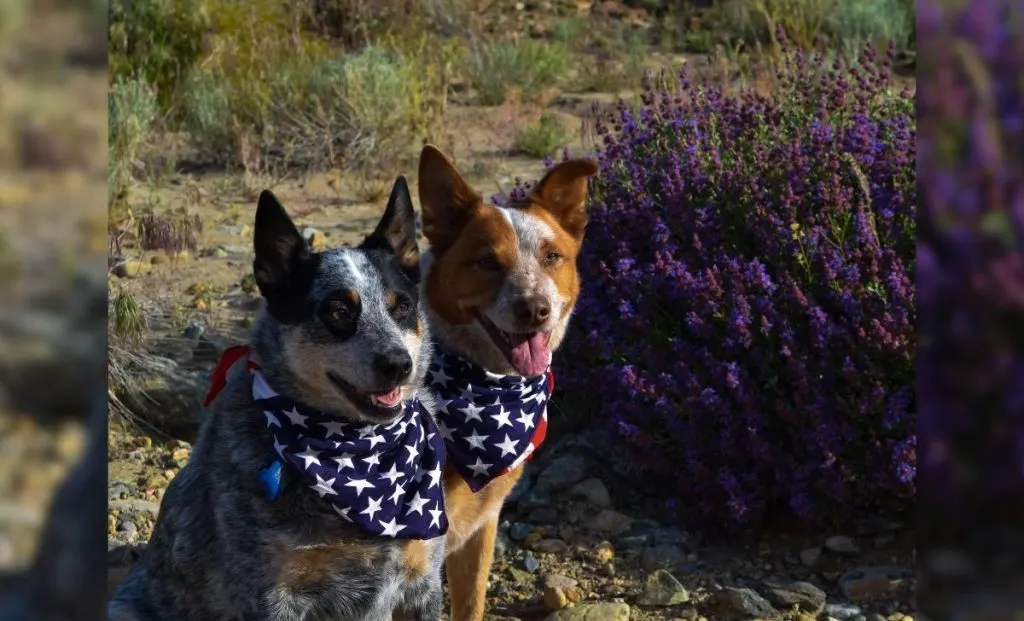
No breed is more fun and engaging than the vibrant Australian Cattle Dogs (ACDs), where the Red Heeler and the Blue Heeler bring their unique characteristics up for discussion.
From unique appearances influenced by intriguing genetics to spirited temperaments and robust health profiles, these animals are much more than mere herders; they remain loyal companions and versatile workmates.
When choosing between a red and a Blue Heeler, it comes down mostly to personal preference for many people regarding their way of life.
Whether attracted by the fiery independent spirit of Red Heeler or the cool adaptability of Blue Heeler, no doubt one will find himself/herself having made an affectionate pet full of energy.
Both types combine intelligence with loyalty plus hard work – characteristics needing particular mention among all dog breeds.
Understanding subtleties regarding their temperament, health issues, or even genes will help you make the right choice and have better luck, ensuring that the Heeler you select will seamlessly fit your life.
You can also check out this Australian Cattle Dog growth chart so you can see the interesting development phases your puppy will go through.
Therefore, it is time to welcome blue or Red Heelers into your house for an adventurous living full of love and lots of tail-wagging moments ahead with this happy dog.
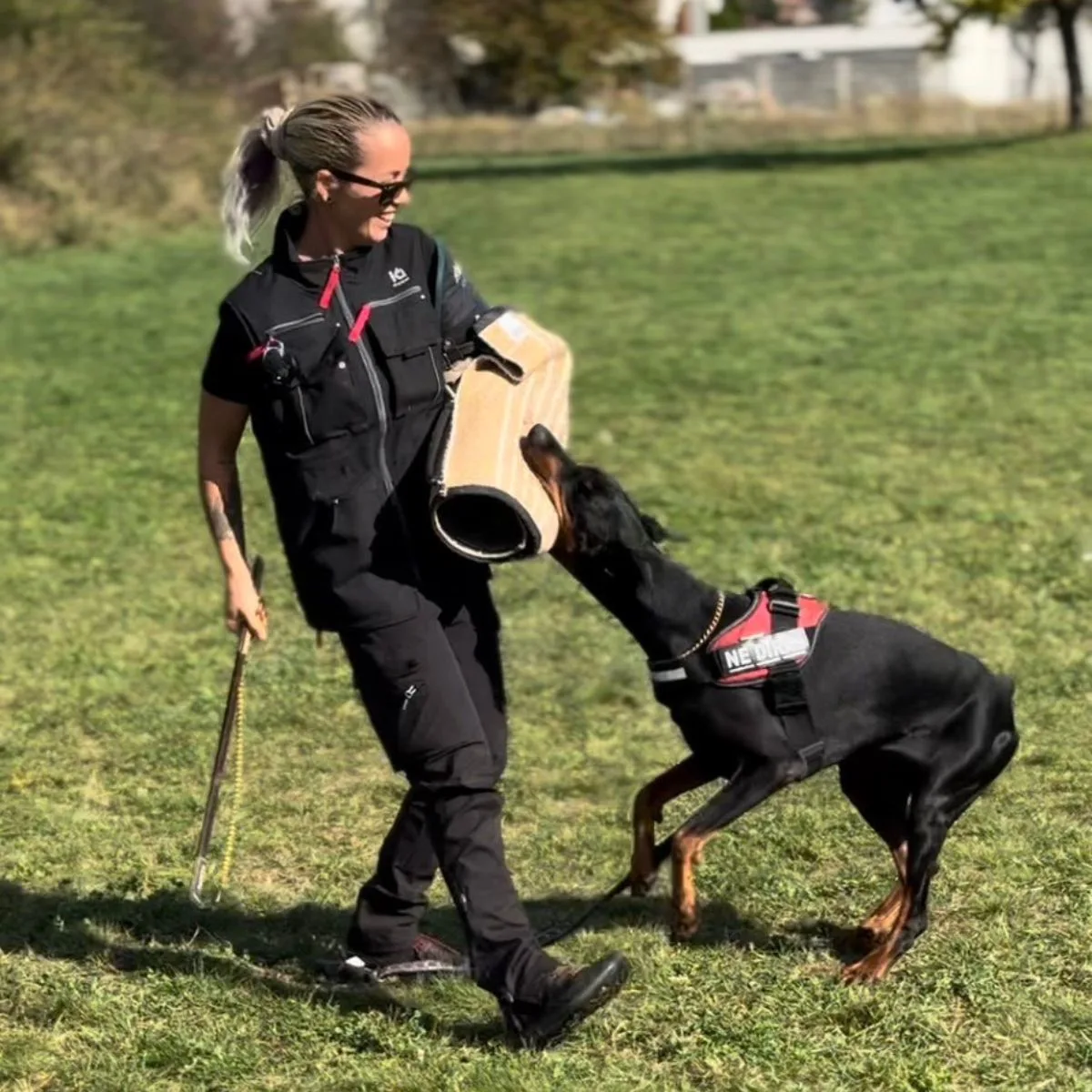
Nandina has been a lifelong dog owner and enthusiast. She shared her home with multiple breeds, including Giant Schnauzers, Cane Corsos, and Huskies. Currently, she is raising a three-year-old rescue and a working-line German Shepherd puppy.
Actively engaged in IGP dog sports for two years, Nandina is a certified instructor for basic obedience and socialization. She works as a trainer in her local dog sports club, and in her spare time, she handicrafts biothane gear for dogs.
